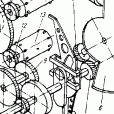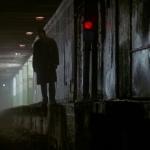Leaderboard
Popular Content
Showing content with the highest reputation on 07/03/2015 in all areas
-

Anxious about getting a new camera
IronFilm and 3 others reacted to AaronChicago for a topic
Hey man. I see alot of good advice here but I wanted to throw something out that worked for me for awhile. If your budget is $2500 or so get 2 cameras that check off all of your needs. G7 for convenience, long battery life, ease of use, 4k recording, etc. Blackmagic pocket camera for when you need top notch image quality with 10 bit ProRes or RAW. I believe with those 2 cameras you'd have all of your bases covered. Those 2 cameras plus a speedbooster would hit around $2500.4 points -

Anxious about getting a new camera
Mat Mayer and one other reacted to TheRenaissanceMan for a topic
Many reviews have put the NX1 right up there with some FF cameras in terms of stills IQ. Go search the NX1 or NX500 on Flickr and you'll see tons of great work from that sensor. In terms of future-proofing, I've found the Blackmagic cameras to hold up the best. They're defined more by the support gear you attack then by the camera itself, and 12-bit RAW/10-bit Prores 422 isn't getting old anytime soon. You even have the option of 1080p, 2.5K, and 4K, and two different flexible form factors. Mattias recently posted a shootout between four cameras without telling anyone what they were. The most popular camera, the one everyone praised as being extremely detailed with great dynamic range, even going so far as to guess it as the BMPC, A7S, GH4, or NX1, was...the Blackmagic Pocket. So if even us camera dorks who spend our leisure time picking out nuances in footage can't tell what's 1080p and what's not, I doubt that extra resolution will make or break your work. Unless you want the ability to cut in to close-up and MCU from a medium shot or want the extra resolution to stabilize, 4K isn't a necessity for anything these days. Thanks to the Speedbooster system, you can even invest in larger format glass, use it effectively on your smaller sensor camera, and keep that investment if you ever decide to buy a larger-sensor camera. That's why I like to avoid buying the latest, greatest, most amazing cameras. I invest in great glass, then buy the sub-$500 clearance cameras like the G6 and jump on sales like the BMPCC $495. Instead of a nicer, higher-res camera, I bought lights, reflectors, diffusers, filters, a nice fluid head tripod, an external audio recorder, a lavalier mic, upgraded PC components, and a nicer editing monitor. Next up on my list is grading software, Speedlooks' LUT package, Neat Video V4, an external field monitor, and some online editing/color correction tutorials. That stuff, along with experience and problem-solving skills, will always outshine whatever sensor is in your camera. Besides, renting bodies is cheap.2 points -
I bought one a couple months ago and I absolutely love it. I got a 5d2 around a year ago (mainly for work) and wanted to start shooting RAW so I picked up a VAF on eBay for a very fair price. I switch between video and stills a lot and the biggest problem is remembering to take the thing out when I take pictures. When I first got a card fast enough for ML RAW, I figured I could "shoot around" the moire and aliasing, but I quickly realized that I NEEDED the VAF if I wanted an acceptable image with RAW on the 5d. I know some people don't need or use a VAF with a 5d because they use the crop mode which essentially removes the problems. I don't want to shoot everything with a 3x crop since I use mostly tighter lenses. Here's my first ML RAW test video with my 5d and the 5D2b, I think it turned out decent (note, I'm not very good at the workflow/color grading) - -Tom2 points
-
here it is being used on aps-c and a ff58 with 1.5x oval. Very lomo-esq! the CA and softness i can live with. PS. this was decoated so flares up in a crazy way!1 point
-
Here's my crack at it. There's a little man in your camera. He sees everything through the sensor, God like vision However, he is only given 255 paints for each color, red green and blue. Each color ranges from very dark to very light. He uses this combination of 255 x 255 x 255 reds, greens, and blues, to create a full color image for you. The problem for our little camera-man is that he often sees colors, say a blue, that sit between two of his blue paints. Might be a 243.5, a little brighter than 243 and a little darker than 244. Indeed, he believes he really needs 1,000 paints per color to render a good image. But, and this is the first KEY thing, HE ONLY HAS 255 PAINTS TO WORK WITH IN EACH COLOR. You go to the beach with your camera and you take an image of your wife. The man in your camera says, it's a shame I don't have more lighter colors because there's a fantastic twinkle in your wife's eyes and nice colors in those clouds. I have all these dark colors and I don't need any of them. So what if you found a way to take his palette of 255 colors, throw out half of the dark colors and give him double the amount of light colors? So you have, say 1,3,5,7 at the low end and then, 225, 225.5, 226, 226.6 at the high end? What if you did that, but spread it out evenly (Curved them); that is, gave him only a few paints for dark colors but more and more colors as you got lighter--KEEPING IN MIND YOU HAVE A MAXIMUM of 255? You DO NOT END UP WITH MORE RECORDED DYNAMIC RANGE. Rather, you have REDUCED dynamic range where you AESTHETICALLY don't care about it, and INCREASED dynamic range where you do. But it is a judgment call. The total dynamic range is still 255 colors. I got into a lot of trouble with these logs on the GH4 because I don't have enough experience to know when it's better to shift the recorded dynamic range. I'd rather have RAW because you can apply curves AFTER the fact. If you shoot S-LOG in an evenly lit scene you'll end up with muddy darks because you didn't give them the same paints as you gave the lights. Hope this helps!1 point
-

Anxious about getting a new camera
TheRenaissanceMan reacted to maxotics for a topic
Ricardo, if you work primarily in video and you want the best 4K camera then I follow your logic with the NX1. However, I couldn't agree with TheRenaissanceMan more. There's a whole lot more that goes into a final product than the image recorded in a camera body. Consider this, a RAW based camera (BM or Canon with ML for example), records 14bit values at every pixel. That means when you debayer each pixel you end up with 42bits of FULL color information. In consumer video cameras, like the NX1, the camera takes each 12 bits from each pixel and combines them IN CAMERA with other pixels to create a 24bit FULL color value. Those values are then further compressed into a video stream. It doesn't matter if everyone has 4K video monitors in 2 years, say, 1080 video from a RAW camera will often be superior because most good video is shot for EMOTION, not resolution. And filmic EMOTIONAL range needs dynamic range, NOT sharpness IMHO. If you look at Oliver's reel you'll see simply amazing stuff, most of it shot with a GH3 (similar to the g6), which I believe will STAND THE TEST of time. If you want a super-sharp, high contrast look, then sounds like the NX1 camera is the one for you. If you want to shoot a wedding scene of a couple alone in a church, say and you want a little hair light, you'll wish you had a G6 and a small good quality LED light on a stand. No matter how good a camera is, if you can't light it the camera can't see it! What I loved about Mattias's video comparison is that, really, ALL the cameras were good!1 point -
1 point
-
Anxious about getting a new camera
Mat Mayer reacted to Mattias Burling for a topic
If you're interested I did a test with the NX1, LX100 and the Production Camera.1 point -

Mosaic VAF-5D2... B version.
Sekhar reacted to Volker Schmidt for a topic
Yes, as Ebrahim said; when shooting raw, internal sharpening is useless. You make it in the post. Back to the question Ty: I´ve had the same question, a few years ago (VAF-5d or newer version) and also don´t found informations or reviews about it. My advice: If you can get a VAF used, regardless of the version - buy it! It´s worth the money! I think, the overall image quality of both versions are the same but if you like to use wider lenses then 24mm here the b-version is the better one. I have the original version and when I shoot 24mm with my Canon 24-70 the corners are less sharp, but no problem for me: looks a bit like anamorphic shooting:). My Minolta 24mm on the other hand is sharp even in the corners. In short: regardless of the version - the VAF is worth the money. it eliminated the 5dmk2 issues very well! if you want to shoot wider then 24mm - the b-version should be your choice. I have a lot of tests on my vimeo site. Here is one for example:1 point -
Ebrahim. I'm not sure if this will help, but one non-mathematical way to think about encoding log gamma is to imagine just spraying paint against a wall. If the wall is flat, the density of the spray should be even when it dries. If you curve the wall (log) with a knee and shoulder etc and do the same experiment, when the wall is straightened out, the distribution of the paint should have areas that are dense and other areas that are thin. It's the same total amount of info, just re-distributed to encode areas where more detail is needed. For example, setting middle gray at 18% (what we see as 50%) and moving it toward the middle to allow more code values underneath. This was essentially Kodak's scheme to preserve film print density in a low bit depth workflow and digital cameras today are using the same technique, but it was not mean to be the final look of the gamma, the print that was eventually created went back to linear. All the different Log-X types are just variants for different proprietary workflows, but borrowing from Cineon.1 point
-
Some new Canon XC10 footage
sudopera reacted to Mattias Burling for a topic
Probably best to wait, perfect camera should be just around the corner1 point -
Anxious about getting a new camera
TheRenaissanceMan reacted to Mattias Burling for a topic
One could argue that people found the super cheap gm1 the best since it scored similar to the bmpcc and beat it in the detailed shot. But I agree, blackmagic is good stuff.1 point -
I thought it softened the image a bit, though it's possible I just felt that way after it got rid of all the moire. Still, using the filter + sharpening in post would give a better image than not using the filter. Even if softer, the image was more organic. It all depends on what you want to do. If you do docs and events and can't control what's in the scene, then yes moire will be an issue, and you'll need this filter with 5D2. But then, why stick to 5D2 when you have much better options today? I got NX1 a month back, and the 4K video from that makes my 6D video look like garbage...with or without a filter. IMO even a $700 NX500 would be better for video even if it isn't FF. Also, if you plan to go back/forth between video and stills, you'll have a problem because you'll need to remove the filter to shoot stills. Bottom line, ff you're doing narrative work and can control what's in the scene, then getting the filter doesn't make much sense I think. I was using CineStyle with the corresponding settings on my 6D, and those alone did a great job in reducing moire/aliasing from the defaults. So either that with your 5D2 or a different camera would work better for feature stuff.1 point
-
I bought one for my 6D but had to send it back. It removed the hideous 6D moire very well, so it absolutely works. But it had a fatal flaw for me: it loses focus each time you change zoom. If you shoot with primes or don't zoom much, then this would be great; otherwise, you might want to think this through.1 point
-

Anxious about getting a new camera
IronFilm reacted to fuzzynormal for a topic
I think this is an unfortunate assumption. One that I see often on online forums. As you can read in my previous post, I feel it's what you do with the gear rather than the gear itself. People need to stop fretting about spec sheets and just use the stuff. I don't think folks are doing themselves any favors when they feel their potential success is tied directly to whatever gear they have. Yes, it's part of the equation and you need to take the considerations seriously. It's just not as important, IMHO, as many seemingly tend to believe. So many other factors (and most not technically related) are so more valuable to a successful production. I'll qualify this and say that this is from my experience as a corporate video shooter. Other's reality may be different.1 point -

Anxious about getting a new camera
IronFilm reacted to fuzzynormal for a topic
From my perspective on the low-end corporate side of things: Any camera in the price range you're talking about will do everything you need it to do and it'll look fine. You're not going to be limited by the technology. You're really not. These days my assertion is that it's all about the skill level and creativity you bring to the shoot, not the consumer gear you buy... unless you decide to really go upmarket and invest 10K+ in gear that higher level clients feel more comfortable with. --which isn't always a bad thing. Sometimes clients like seeing a bunch of "real" gear around and they'll pay for that reassurance, even though a shooter does the same exact thing with an expensive camera as they do with an inexpensive one. I like to rent gear in these upscale circumstances as the cost gets passed onto the client anyway. All this depends on the clients you're trying to land. If you're doing weddings or low end stuff, I say ignore the expensive gear altogether. I do. As for the NX1, as long as you're willing to go through the transcoding step, (people that typically don't like this step are the ones that gripe about dealing with the new video codec) it really shouldn't be a problem. I personally don't mind transcoding to prores422 and do it for all my footage anyway regardless of the acquisition codec. And there's ALWAYS a new and better piece of gear just around the corner. I mean, I'd even be contrarian and suggest (if you're really trying to keep the budget tight) considering a GX7 ($450 used) or similar if you want great looking 1080 IQ for less. My advice is to stay one generation behind the "cutting edge" of equipment, buy stuff when it discounts (new or used) and concentrate your efforts on shooting and lighting. So, you know, before worrying so much about a such-and-such camera, I always recommend concentrating on lighting first. The best shooters understand how to paint with light; natural or artificial... and if you know what you're doing in this regard then you can make any camera look good. I'd say try not to get caught up in the Gear Acquisition Syndrome. Now, all that bloviating aside, if I was buying a new camera today and had money burning a hole in my pocket, I'd pick up a A7s simply because it allows some fun creative filming and flexibility with light. You can do more with less when it comes to lighting, and that's always a good thing. Bottom line: Whatever you get, use it as a creative tool, not a crutch. Don't worry if it does't do something as well as another piece of gear, just make it do what you want to the best of your ability.1 point -
I'll do a detailed image comparison between the 1D C and A7S soon on EOSHD so look out for that. Even after owning the 1D C I can't argue with some of the ways the A7S is superior, but most of those relate to it as a 1080p camera. When you rig it up with an external recorder for 4K it becomes something rather different ergonomically. It isn't a small mirrorless camera with EVF any more. In fact you can't use the EVF at all whilst it is outputting 4K. It just didn't deliver what I needed. The screen visibility and battery life of the Shogun became a pretty big issue for me, whilst as a 1080p camera I had neither problem, at least with the battery grip and a few spares! So here I was in a predicament. The Shogun on the one hand was a fantastic piece of technology and I'm going to get some more use out of it for sure, once I solve the issue of seeing the screen outdoors and powering it properly, and the ergonomics of rigging it to such small cameras. But the main predicament was that although I had quite a few beautiful images coming out of the various cameras I owned, they all had practical flaws. I wanted the colour, dynamic range and full frame loveliness I was getting with Magic Lantern raw video on the 5D Mark III, but the file sizes were even larger than the 1D C for plain old 1080p. Reliability also an issue, I found the 1000x komputerbay cards kept going through slow phases (possibly due to file system fragmentation) and especially at higher ISOs the recording would keep stopping. The problem with 1080p is it isn't a future proof format. It will be consigned to the dustbin. Not like Super 8 or 16mm or film which creep back over time for their artistic qualities. 1080p will just go to the grave I feel, like 720 and SD. If it comes back as a retro format it will have a particular look like VHS in the future and so be very niche, not like super 16mm film which is more flexible in the way it looks, so can be used for a broad range of filmmaking even in 2015. The NX1 and GH4 shoot 4K internally but their images are a little too compressed. The NX1 holds onto a lot of fine detail but doesn't have a grain character to speak of in plain shaded areas. However the image isn't so much the issue - it is the lack of active Canon EF adapter to NX mount and the lack of low light performance once you get past ISO 1600. I will still be using my NX1 when I need the smallest file sizes and super 35mm sensor in good light, and the upcoming firmware will be very interesting. Good b-cam. As is the GH4, will be keeping that, just not for low light! The A7S ticked the most boxes overall, great in low light, S-LOG with minimal banding, but the need to shoot at ISO 3200 in bright light using strong filtration, the need to add a lens adapter for Canon EF lenses that still doesn't always work right, the need to add the recorder for 4K on a wobbly HDMI cable... all this weigh heavily against it for my purposes. So to the 1D C, now at around the same price I can sell my GH4, 5D Mk III, 5D Mk II and 7D for which effectively it replaces (although I'll definitely keep the GH4 anyway) it solves a number of problems. First it replaces the 5D Mark III as a stills camera so I can finally get rid of it. It shoots 4K internally and is weather sealed. It has a native mount compatible with my best glass. It works well with the IS on my Canon lenses and no bugs. It is ultra reliable. The image maintains a fine noise grain. It is capable of matching or maybe even exceeding the dynamic range I had from S-LOG2 on the A7S and ML raw on the 5D3. It has colour which is easier to get right from the flat profile (Canon LOG) much like the D750, so takes less work to grade. It especially has better colour in the standard rec.709 picture profiles. It has less moire and aliasing in 4K than the A7S to external recorder, possibly due to stronger OLPF. Yet it resolves the same amount of actual real detail minus the false detail and 4K is enough detail to last me almost forever anyway. It lacks the niceties of the mirrorless cameras though but makes up for it with heft and build quality. No EVF but I've added one without radically changing the form factor or adding too much unbalanced weight. No peaking or focus assists whilst recording but again that is solved by adding the EVF. No mirrorless mount so I can't use my Cooke PLs but these don't cover full frame anyway (so corners would likely be soft in 1.3x). I will use my NX1 for those. Very good internal 1080p in Super 35mm mode and to Ninja Star, but the full frame 1080p isn't as good as the full frame 1080p from the A7S. Those are the things I miss and the banding can rear up sometimes especially at low ISOs in C-LOG but generally I feel there's some logic behind it now at £5k, whereas there wasn't before with so many promising other cameras that I thought would supersede it. They haven't. And the main logic failing of the 1D C was always the price not the image, and the fact they didn't add enough video bells & whistles.1 point
-
yes its just you. if you owned it and used it you would understand the beauty of this camera. at almost half price, its a bargain, and they are so good, that you rarely find any good used ones. This camera is no mistake. Its top quality photo/video magic all in one, the flagship of 80 years of canon camera tech... yes good things are coming from canon, but this camera is future-proof. love c.1 point






